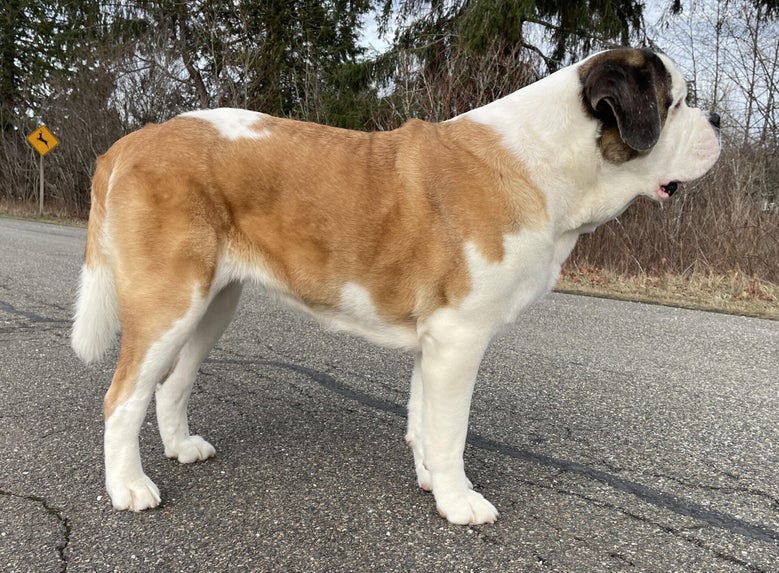We’ve all seen it. The agility dog that’s a powerhouse on the course but seems a little stiff going up and down the stairs. The family Labrador who, for no clear reason, always chooses to lie on his left side. These aren't problems that show up on a diagnostic test, but they're part of a dog's physical story.
What drew me to Galen Myotherapy® wasn't just the technique, but the deep dive into this subtle language of a dog's body and giving the dog complete control of their sessions. It's a framework for understanding the incredible network of bones/joints, muscle and fascia that powers every single thing a dog does. Here in California, my role is clear and one I take very seriously: to provide wellness and maintenance massage that supports a dog's overall health, always in partnership with their veterinary team. This post is a look into my world—how I observe the architecture of a dog's movement to support their long-term comfort and performance.

More Than Just Muscle: The Power of Balance
The analogy that always come to mind is a good pair of walking shoes. When the soles are new, they support your body perfectly. But over time, if one side begins to wear down faster than the other, it subtly changes your gait. While it's not an injury, that tiny, consistent imbalance can eventually lead to an achy knee or a sore hip.
It's precisely the same for a dog's muscular system. Small imbalances can create patterns of uneven 'wear and tear' on their body's framework (consider what happens to the shape of a dog's foot when they have consistently overgrown toenails). My goal is to help dogs maintain that even 'tread,' supporting their long-term comfort and resilience.
When we focus on supporting that muscular balance, the benefits are pretty incredible:
- Fluid and Efficient Movement: They move with an ease that looks and feels more comfortable.
-
Enhanced Stamina: Better mechanics mean less wasted energy, whether they're hiking a trail or playing with other dogs.
-
Improved Body Awareness: A balanced body helps a dog feel more confident and stable in its movements and can decrease anxiety.

What I See When I Look at a Dog
My process is grounded in quiet, careful observation. It's a conversation that happens long before my hands ever touch the dog.
1. The Story in the Stance: The first thing I do is simply watch. How does the dog naturally carry themselves? Are they favoring one side, even slightly? Are their paws squarely underneath them, or is one consistently turned out? A dog’s resting posture tells a big story about their lifestyle, shaped by habit and history. It gives me a blueprint of his muscular patterns before they even take a step.
2. The Rhythm of the Walk: Movement tells the next chapter of the story. I'm not looking for an obvious limp; I'm watching for rhythm, for flow. Is there a little 'hitch' in the trot that only shows up after a few minutes? Does their head bob almost imperceptibly? Does the tail have a gentle, symmetrical swing, or is it held a bit tight or favor one side? These are the subtle details that speak volumes about their muscular comfort and ease of movement.
3. A Dialogue Through Touch: Finally, the hands-on assessment often confirms what the eyes suspect. This is where my knowledge of anatomy becomes a tool for listening. I'm feeling for the texture and quality of the skin and muscle—is the muscle supple and springy like a healthy muscle should be, or does it feel dense and tight, like a rope under tension? This dialogue through touch allows me to map out a wellness massage that is truly tailored to that individual dog's needs.

A Foundation of Trust: The "Choice-Led" Approach
Everything I've just described—all the observation and hands-on work—is built on a single, non-negotiable foundation: the dog's willing participation.
In Galen Myotherapy®, we call this Positive PACT (Progressive, Adaptive, and Controlled Touch), but what it really boils down to is this: the dog is always in control. Always. The whole session is a quiet conversation. I'm constantly watching for the soft eye, the relaxed jaw, the unmistakable lean-in that says, “Yes, that’s it.” That’s their consent, and it has to be earned moment to moment.
Just as loudly, a flick of an ear, a quick lip lick, or a slight stiffening of the body says, “Not there, not yet.” And I listen. Instantly. We slow down, we back off, we adapt. The dog has the freedom to walk away at any time, and that trust changes everything. It’s no longer me ‘working on’ a dog; it’s the two of us working together to find comfort.
For the vets and canine professionals I partner with, this is key. When a dog feels safe and in control with me, that trust often carries over, making everyone's job on their wellness team a little easier.
My Role on Your Team
My work is designed to complement the veterinary team, never to replace it. Think of me as a specialist providing detailed "field notes" on a dog's muscular wellness. I do not diagnose, and I do not treat conditions.
My commitment to clients is simple: to provide an exceptional level of Galen Myotherapy®, and to be a responsible, collaborative professional. If my observations ever raise a question mark — anything that suggests a need for a deeper look — my report always concludes with a strong recommendation to seek veterinary advice.
I believe this collaborative approach is the future of comprehensive canine care. If you're curious to learn more, I'd welcome a conversation.


Add comment
Comments